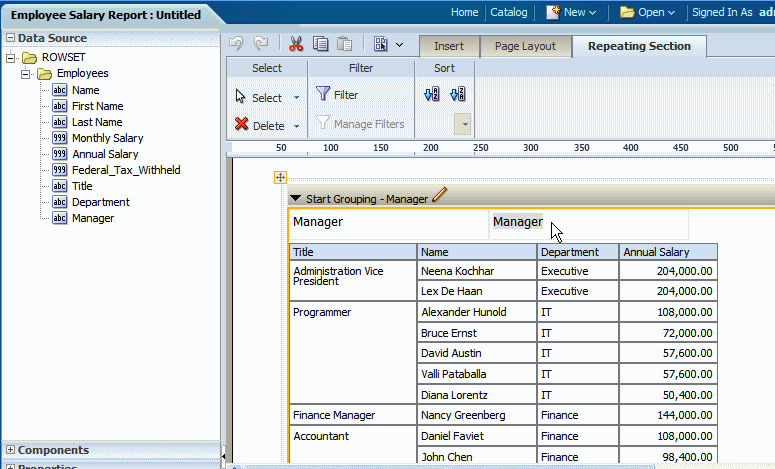

Also, do not forget to check for a print preview to see if the page breaks are correct or not.Always remember to select the first row before inserting any page break.Things to Remember About Excel Insert Page Break Below is the screenshot for the print preview of the third data set.If we directly go on the third page, we can see that the third table is also being printed independently.Now, if we check for print preview, we can see that there are now three different pages.Now in the Page Layout Tab, under the page setup section, click on Breaks.So we again select the first row for page break between the second and third tables. We want to break the rest two tables on different pages also.Now, if we click on 2, we can see the second page of the print preview.To Confirm, we can see below that it is page 1 of the print preview.In the print preview, we can see that the first set is printed independently while the rest two are together.In the Page Layout Tab, under the page setup section, click on Breaks.Select the first row for the page break.Now let us try with three sets of data.We can see that in the print preview, our second set of data is printed. Now click on the second page to view the second set of data.ħ. This is the first page, as we can see below,Ħ. Now we will check for the print preview and click the CTRL + P.ĥ.Now in the Page Layout Tab, under the page setup section, click on Breaks and click on Insert Page Break.First, we select the row from where we want to insert a page break.We want the first set to be printed on the first page while the second set on another. We have a second set of data to be printed, which is as below.We will discuss different grouping sections in BI/XML publisher in another post. Sometimes if re-arrange the group we might need to use the below command. Sum(//Amount) -> To get the sum of the AMOUNT from the above group(SUMABOVE).Įven if you change the for-each group to SUMABOVE( for-each:SUMABOVE) node and the SUM’s are going to work. Sum(//SAL) -> To get all the SUM of SAL with in the same group(ROWS). In order to get the correct SUM we have have to below commands. We have moved out the F -> for-each:ROWS and all the SUM values inside the for-each group. We have two groups(SUMABOVE, ROWS) in the XML data set. Now let’s talk about the SUM functions inside the for-each group. Note: If we notice the report output 2nd row SAL value is NULL, if we don’t use above conditions in RTF template will result fail/error or display NULL value in the SUM of department 10.Īll the above examples, we talked about the SUM of columns outside the for-each group.

We have to use below statements to ignore the NULL values and calculate the SUM for not null values. Let’s assume we have null values in the XML data set for department 10 SAL column. Sum(SAL) -> This is nothing but some all SAL column from ROWS node except the NULL values. Based on the below XML file we have a null value in the SAL column of the 2nd row. Let’s assume sometimes we might get null values in the columns.
Istudio publisher adding data table code#
We have to use below code to get the SUM of SAL for each department. Here if we look at the XML input, we have 2 records for department 10 and 1 record for the department 20. Sometimes we want the totals based on the conditions like user want the sum total for each department. We can use sum(SAL) outside of the for-each loop.

We would like to display the sum salary at the end of the report. Instances like above we can add/change the SUM totals in BI?XML publisher without touching the code. We can write all the SUM functions within our Data set(SQL/Procedure,etc.) but sometimes we might get a request from users to add some other totals(SUM columns). So we can capitalize the SUM function which is available in BI/XML Publisher. Sometime we might end up doing SUM of columns on the fly. Let’s talk about SUM function in BI Publisher.


 0 kommentar(er)
0 kommentar(er)
